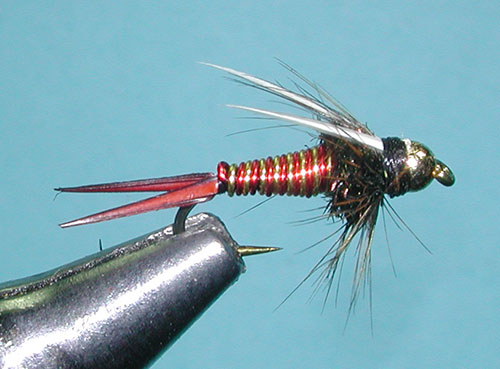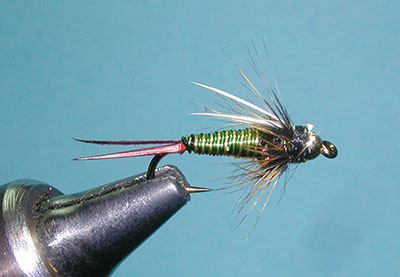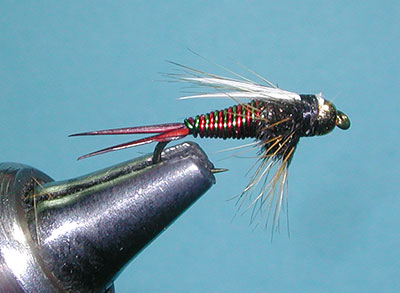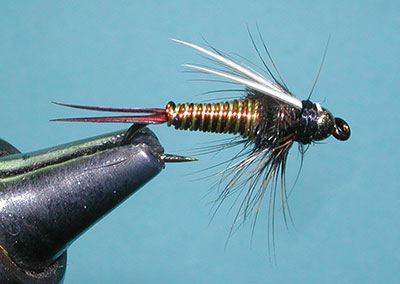|
Notes:
The Hot Wire Prince became a popular prince nymph variation soon after the Copper John was introduced by John Barr. I don't know who actually originated this fly but the origins seem to be in Colorado where it became a popular choice for getting deep into the freestone rivers and streams. Wapsi came out with various colorations of copper in 2001, so it was soon after that date that tyers would experiment with a two color wire body. Not only does the two color provide a distinct segmentation but the two colors will blend together to give a unique appearance. Popular colorations are Red/Yellow, Green/Yellow, Pink/Silver, and Brown/Gold. With movment, these colors will blend together so that the Green/Yellow will look a very buggy bright green. Like the Copper John and the Prince Nymph, the Hot Wire Prince is an attractor nymph but it is very effective in waters with caddis larvae and pupae. It can also represent small stoneflies. The weight of these patterns is a real plus for euro nymphing. Not only do you have the wire body but you can utilize a tungsten beadhead and add a leadwire underbody. With this much weight, I prefer to use a small digital scale to figure out my fly selection with a multi-fly rig. With so much going on with a lead wire underbody and biot tails, it is important to create a smooth thread base underbody that tapers up to the thorax region. Once this is accomplished, the two wire wrap will have a smooth taper as well keeping the two wire close together. Bead suggestions: 7/64" for size 12, 3/32" for size 14-16, and 5/64" for size 18.
|





